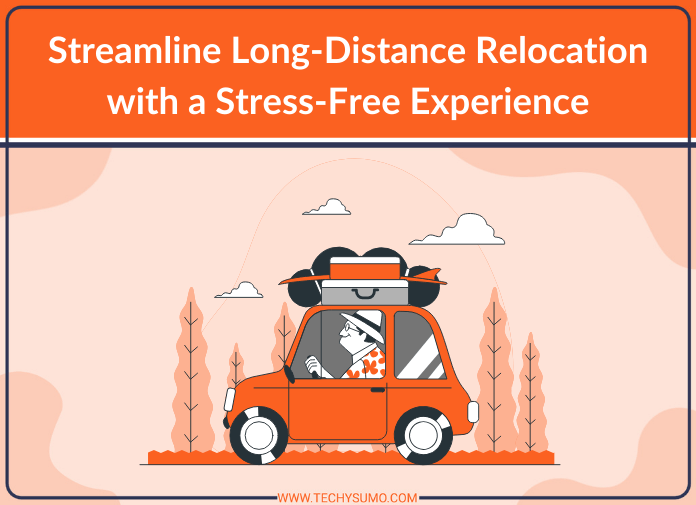Relocating to a new home, especially across long distances, can feel like an overwhelming endeavor. While the idea of starting fresh in a new location is exciting, the process of getting everything packed, moved, and set up in a new environment often brings about feelings of stress and uncertainty. By applying a few well-thought-out strategies, you can transform the relocation process into a smoother, more manageable experience.
Table of Contents
- Embrace Digital Tools for Better Organization
- Hire a Specialized Relocation Service
- Maximize Your Space with Innovative Packing Solutions
- Take Advantage of Delivery Services
- Focus on Your Emotional Well-Being
- Keep Track of Important Documentation
- Set Realistic Expectations for Your Arrival
- Unwind and Take Your Time
- Conclusion
Embrace Digital Tools for Better Organization
In the age of technology, there’s no need to rely solely on pen and paper to organize your move. There are plenty of digital tools and apps designed to keep you on track. Consider using a moving-specific app that helps you with everything from creating checklists and setting reminders to tracking your expenses. Apps like Move Advisor and Sortly allow you to inventory your belongings and create detailed packing plans, while others help you find the best movers and service providers in your new area.
In addition to keeping track of the logistics, you can also manage communication with your moving team, whether they’re friends helping you move or professionals.
Hire a Specialized Relocation Service
Long-distance moves require a different level of planning than local ones, and that’s where specialized relocation services come in. Unlike general moving companies, these professionals are experienced in managing the unique challenges of cross-country or international relocations. They offer services that go beyond just packing and transporting, including customs assistance (for international moves), expert advice on navigating travel restrictions, and even temporary storage options. By hiring a relocation service, you gain access to their extensive knowledge of the moving process, ensuring that nothing is overlooked.
Maximize Your Space with Innovative Packing Solutions
Packing for a long-distance move is more than just putting items into boxes. It’s an opportunity to think strategically about how to maximize space and minimize the number of boxes you’ll need to transport. For example, consider using vacuum-sealed bags for clothes and bedding, which will reduce their size significantly and protect them from dirt and damage.
Also Read
Investing in reusable containers rather than traditional cardboard boxes can also be a smart choice for long-distance moves. Sturdy plastic bins can be stacked, are easier to carry, and provide extra protection for your belongings during the move. Additionally, instead of wrapping fragile items in packing paper, use your clothes, towels, and linens to cushion delicate objects.
Take Advantage of Delivery Services
If you’re moving across the country or internationally, the expense of transporting your entire household can be significant. Instead of bringing every single item, consider using delivery services for non-urgent items, like seasonal clothing, books, or extra furniture. Shipping these items ahead of time can save you money on your moving truck and give you more flexibility with your packing. If you’re planning to move long-distance, don’t forget to make arrangements to transport your car Vermont, ensuring that it arrives safely at your new home without adding extra stress to your journey.
With the convenience of door-to-door shipping services, you can send non-essentials to your new address well in advance. They consider container shipping tracker software providing you complete transparency of their work. This allows you to prioritize packing only what you need for the immediate future, thus reducing the pressure of having everything ready at once.
Focus on Your Emotional Well-Being

Long-distance relocations can take a toll not just physically but emotionally as well. Moving away from familiar surroundings can trigger feelings of nostalgia, homesickness, and even isolation. To maintain your emotional well-being, start by establishing a support system that can help guide you through the process. This might include family members, close friends, or even a professional therapist who can offer advice during this transition.
Try to maintain regular communication with loved ones, especially during the first few weeks of the move. It’s also important to establish a routine in your new environment as soon as possible.
Keep Track of Important Documentation
During a long-distance relocation, especially when moving internationally, it’s easy to overlook the need to handle important paperwork. Alongside your packing and moving plans, make sure to gather and organize all essential documents, such as passports, visas, medical records, financial documents, and property agreements.
Using a dedicated folder or a digital scanning app will allow you to keep track of these items in one place. You can even create a checklist of documentation that you’ll need to update once you arrive at your new home—such as changing your address, registering with local authorities, or updating insurance policies.
Set Realistic Expectations for Your Arrival
The days and weeks after your move can be just as stressful as the relocation itself, especially if you’re trying to settle in too quickly. While it’s important to get your home set up, remember that you don’t have to do everything at once. Break the process down into manageable chunks: start by creating a functional living space and tackle other areas as you go.
For example, focus first on setting up your kitchen, bathroom, and bedroom. Once you have these essential areas in place, you can begin working on other rooms. Setting realistic expectations for how much you can accomplish in the first few days will prevent feelings of being overwhelmed and ensure that you don’t burn yourself out.
Unwind and Take Your Time
After the bulk of the move is over, don’t forget to take time for yourself. Many people rush through the post-move process to “get back to normal,” but it’s important to unwind and give yourself a chance to adjust to the new environment. Whether it’s taking a few days off work, going for walks in your new neighborhood, or spending time with loved ones, allow yourself space to relax.
Remember, moving is not just a physical process—it’s also a mental and emotional journey. Allowing yourself time to adjust will help you embrace the change and fully enjoy your new chapter.
Conclusion
You can transform your move into a more manageable and even enjoyable experience by following these practical tips. With careful planning and patience, your long-distance relocation can be the smooth transition you’ve been hoping for.






